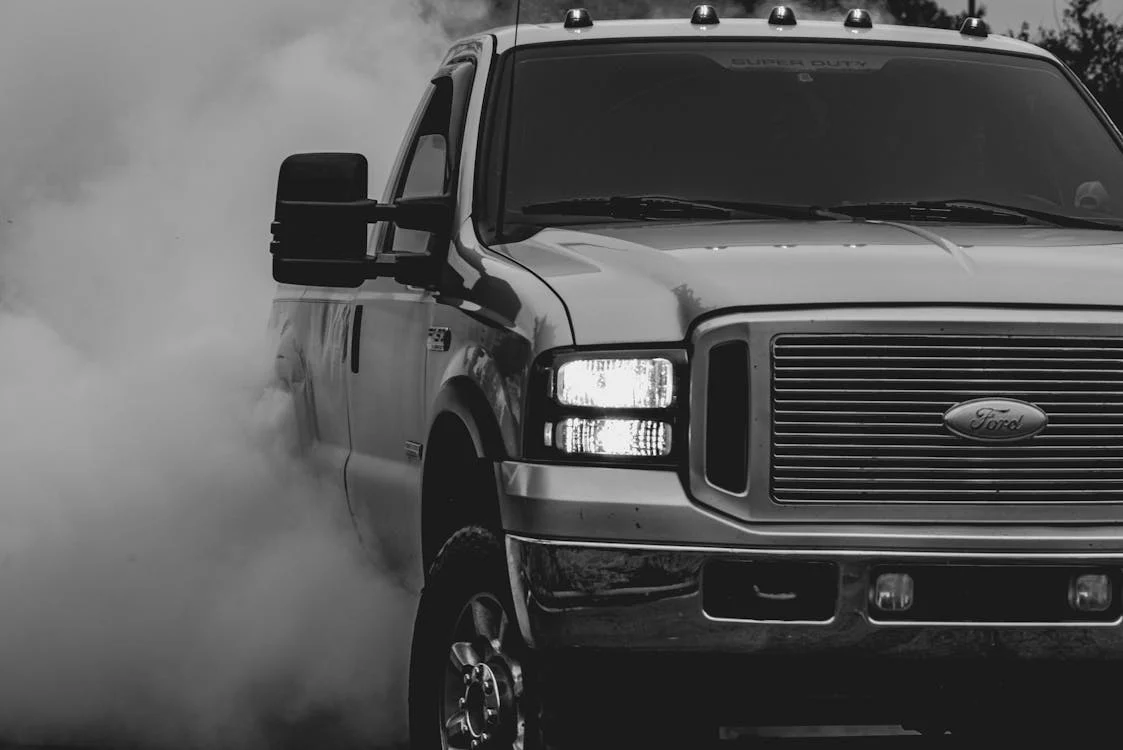 ST-STAFF
.
April 04, 2025
.
Industry News
ST-STAFF
.
April 04, 2025
.
Industry News

Photo by: Pexels
Restoring an old diesel pickup is a challenging but rewarding process. These trucks are built to last, yet years of wear can lead to engine trouble, rust, and failing components. Without a clear plan, costs can rise quickly, and unexpected issues may stall progress.
What components should be replaced, and which ones are suitable for restoration? What truck models are easiest to work on, and which upgrades make the biggest difference? Avoiding costly mistakes starts with research and careful planning.
In this article, we will break down the key factors to consider before taking on a diesel truck restoration project.
Not all diesel pickups are ideal restoration candidates, so choosing wisely makes the process easier. Some models have better aftermarket support, making it easier to source parts and upgrades.
Ford’s 7.3L Power Stroke and early Duramax models are solid choices with strong reliability. Certain generations of these trucks are more desirable due to their durability and ease of modification. Newer Ford models have maintained their reputation for performance, with recent innovations driving continued demand.
Statista notes that the Ford F-Series led U.S. light truck sales, with around 732,100 units sold in 2024. This full-size pickup series remains the top choice, especially the F-150 variant. The 14th generation of the F-Series debuted in 2020, offering modern updates for a wider audience.
Those looking for a classic feel with modern potential often go for a 2nd gen Cummins. This truck, built from 1994 to 2002, is one of the most popular diesel pickups to restore. The 5.9L Cummins engine is known for its simple yet powerful design.
According to Diesel Power Products, plenty of replacement parts are available, making full restorations easier compared to rarer models. Upgrades like bigger injectors, turbochargers, and tuning options make performance improvements simple. Frame and body rust are common concerns, but restoration parts are widely available.
A well-chosen truck sets the stage for a smooth and rewarding restoration.
Restoring an older diesel truck often provides a unique project, but buying a newer model might be more practical. Older trucks allow for full customization and may have more sentimental value. However, newer models come with modern efficiency, warranty protection, and advanced technology for those seeking reliability.
A diesel truck’s engine and drivetrain are the most important parts of a restoration. A thorough inspection helps avoid unexpected breakdowns and expensive repairs. High-mileage engines might need a rebuild, especially if there are excessive oil leaks or blow-by.
A compression test is crucial to understanding engine health before repairs.
HubPages states that an engine compression test helps assess the health of a vehicle’s engine. It measures the pressure generated by each cylinder, providing insight into its overall condition. Low compression could indicate issues like worn piston rings or valve damage. Performing this test regularly can prevent costly repairs.
Transmissions also need careful checks for smooth shifting. Automatic transmissions may need rebuilding, while manuals often require clutch replacements. The driveshaft, axles, and U-joints should be inspected for damage or excessive wear.
Older trucks sometimes struggle with power loss from worn injectors or failing fuel pumps. Reinforcing the drivetrain is smart for those planning horsepower upgrades. Fixing major mechanical issues first prevents bigger problems later. A strong, reliable drivetrain ensures the truck runs well long after the restoration is finished.
Older trucks often suffer from worn-out transmissions, axles, and U-joints, leading to poor performance. Transmission slippage or difficulty in shifting gears are signs of major issues. Additionally, the driveshaft may have excessive wear, affecting the vehicle’s overall handling and reliability.
An aging truck’s suspension and brakes need attention before focusing on looks or performance. Rusted frames are a major problem, especially in trucks used in harsh climates. Inspecting the frame for weak spots or cracks prevents costly surprises later. Suspension components like shocks, leaf springs, and bushings wear out over time.
Heavy-duty trucks used for towing may need upgraded suspension parts for better support. Worn-out steering components can make driving unsafe, so they should be checked early. Older trucks often benefit from modern suspension upgrades for better ride quality.
Brake systems should also be inspected and upgraded if necessary. New brake lines, rotors, and pads improve stopping power and safety.
Fortune Business Insights mentions that a typical brake system consists of components like disc brakes, drum brakes, and hydraulic systems. Disc brakes are often used on front wheels, creating friction with a rotor and brake pads. Drum brakes which are typically found on rear wheels, rely on brake shoes pressing against a drum.
Worn steering components can cause unsafe handling, especially in older trucks. Replacing steering parts like tie rods, ball joints, and pitman arms ensures that the truck steers smoothly and safely. This upgrade enhances overall safety and improves the vehicle’s response during turns and driving.
Restoring a diesel truck can get expensive fast, so budgeting is important from the start. Unexpected issues often come up, increasing costs beyond the initial plan. Engine rebuilds, bodywork, and suspension upgrades add up quickly. Labor costs for professional help can be high, so learning DIY skills helps save money.
Prettymotors.com highlights that if you have the time and budget for a restoration project, you could save up to $10,000. This depends on the scope of the work and the truck’s current condition. Major savings come from handling restoration tasks yourself or choosing cost-effective parts.
Some owners restore their trucks in stages to spread out expenses over time. Prioritizing mechanical repairs first ensures the truck runs properly before focusing on aesthetics. Custom builds tend to cost more than factory restorations, so planning upgrades carefully is important.
Researching potential expenses ahead of time helps avoid financial surprises. Setting realistic expectations prevents frustration when challenges arise. A well-planned budget keeps the project moving without unnecessary stress. Restoration should be enjoyable, not overwhelming, so taking it one step at a time helps.
The truck’s condition directly impacts the restoration budget, with rust and engine wear driving up costs. A truck in poor condition may need extensive work, such as frame replacements or engine rebuilding. Assessing the condition beforehand helps set a more realistic budget and avoid surprises during the restoration process.
A successful diesel truck restoration requires a mix of passion, careful planning, and realistic expectations. It’s important to balance mechanical repairs with aesthetic upgrades for the best results. Regular maintenance, such as compression testing and component inspections, helps prevent future issues and costs.
Taking a phased approach ensures you focus on functionality first, which keeps the project on track. Prioritize engine work and drivetrain repairs before diving into the cosmetic details. This strategy makes the restoration process smoother and more cost-effective.
Share Link